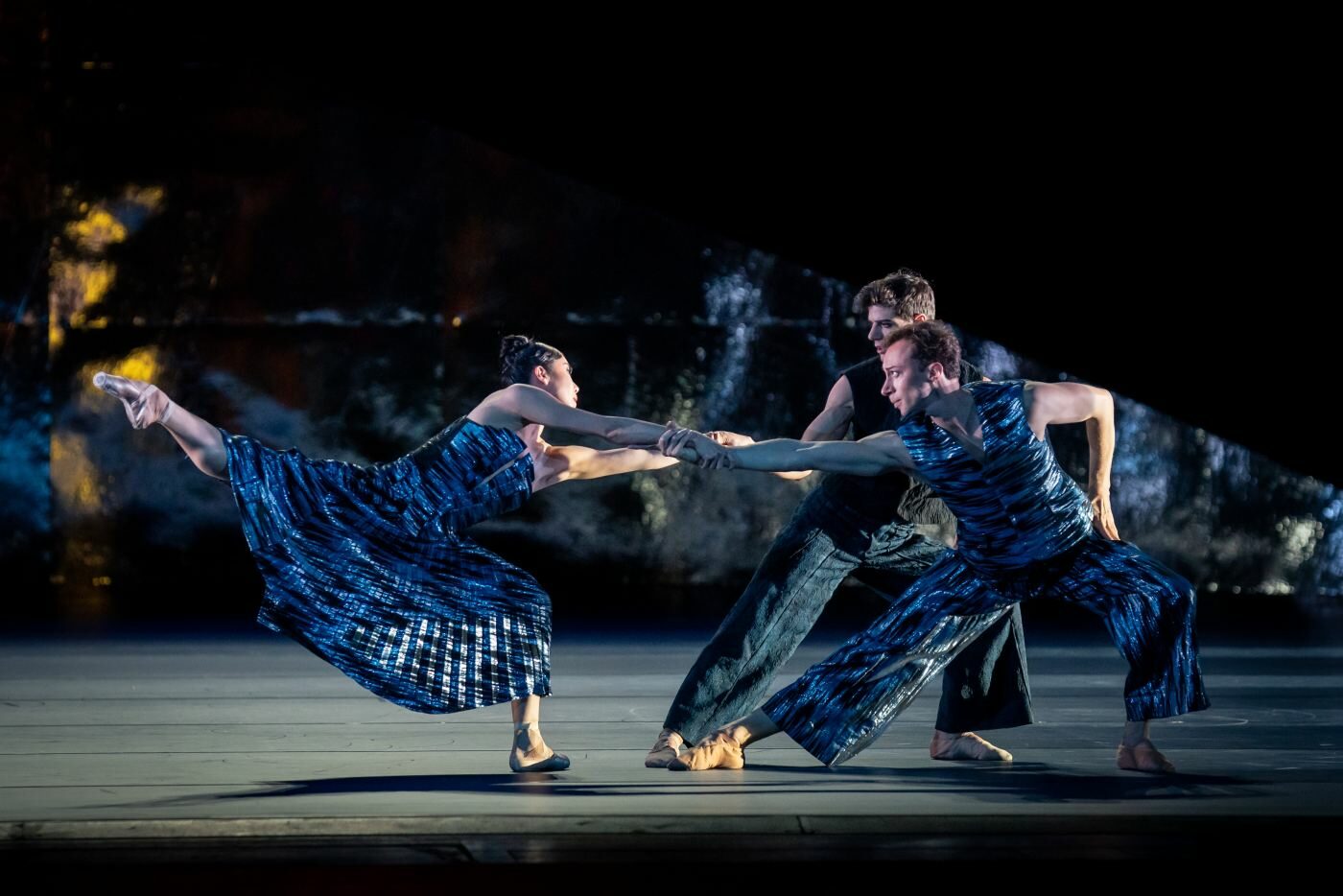John Cranko School
Stuttgart, Germany
September, 2016
by Ilona Landgraf
Copyright © 2016 by Ilona Landgraf
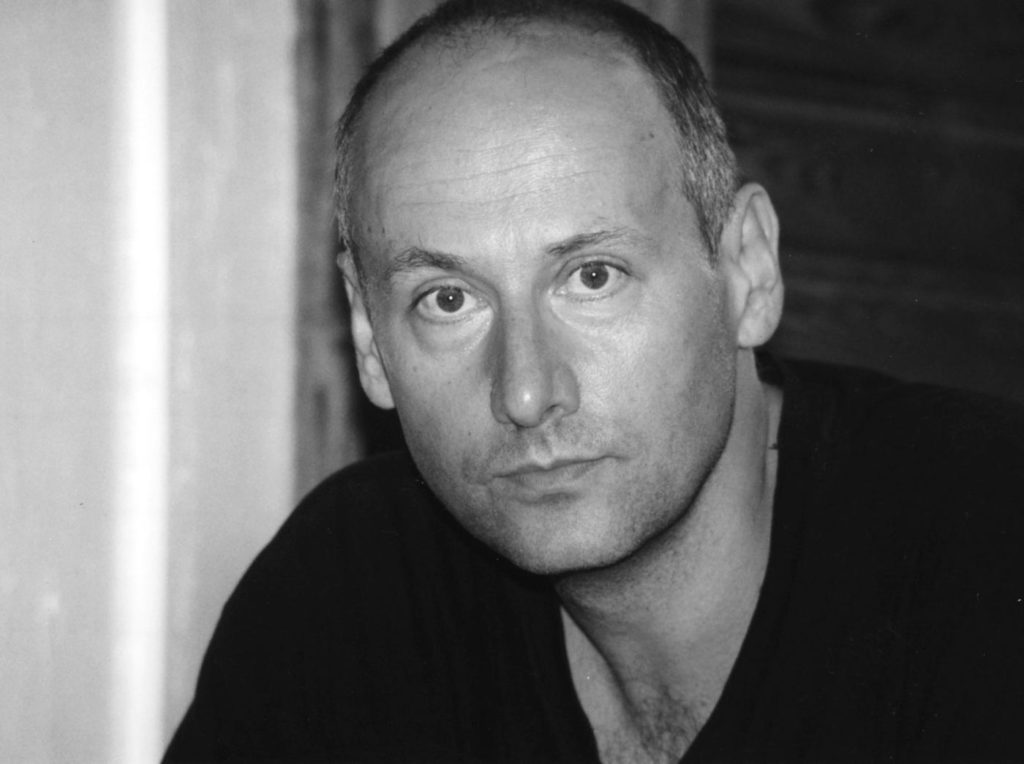 The Cranko School is one of the most renowned ballet schools of the world, a talent pool known for excellence and, according to surveys at the Youth American Grand Prix (YAGP), the second most favored school among students after London’s Royal Ballet School. When I arrived in Stuttgart in mid-September to find out about the school’s formula of success, I was surprised. Located in the Urbanstrasse, around 0,6 miles distance from the State Opera, the five-story building is unremarkable in the row of houses. Only a metal plate next to the entrance reveals that this is the school John Cranko founded in December 1971, ten years after he had taken over the reins of Stuttgart Ballet. The school was named after him in 1974. It houses four studios plus a fifth one the size of a small office. The affiliated dormitory provides 32 places for non-local students. One thing is certain, comfortable, spacious premises aren’t what make the Cranko School attractive. But what does?
The Cranko School is one of the most renowned ballet schools of the world, a talent pool known for excellence and, according to surveys at the Youth American Grand Prix (YAGP), the second most favored school among students after London’s Royal Ballet School. When I arrived in Stuttgart in mid-September to find out about the school’s formula of success, I was surprised. Located in the Urbanstrasse, around 0,6 miles distance from the State Opera, the five-story building is unremarkable in the row of houses. Only a metal plate next to the entrance reveals that this is the school John Cranko founded in December 1971, ten years after he had taken over the reins of Stuttgart Ballet. The school was named after him in 1974. It houses four studios plus a fifth one the size of a small office. The affiliated dormitory provides 32 places for non-local students. One thing is certain, comfortable, spacious premises aren’t what make the Cranko School attractive. But what does?
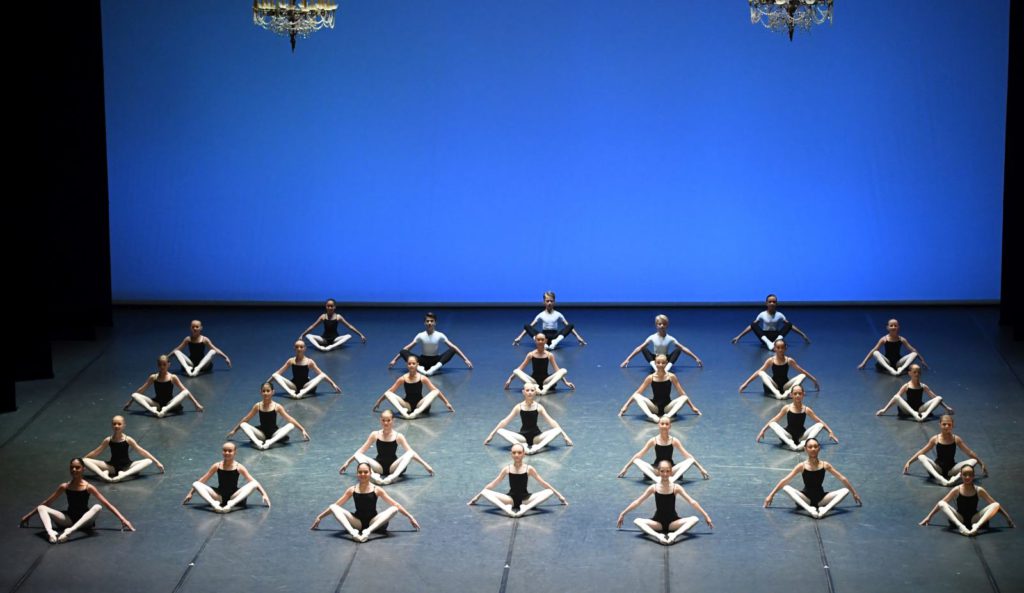 The Cranko School was and still is the main and constant feeder for Stuttgart Ballet. Around 65% of the company graduated from there, among them the current principals Alicia Amatriain, Anna Osadcenko, Hyo-Jung Kang and Constantine Allen. Also the company’s resident choreographer Demis Volpi and Tamas Detrich, who will succeed Reid Anderson as artistic director in the 2018/19 season, are former Cranko School students. Hence Cranko’s plan to raise his own future generation of dancers has worked out perfectly. But back then in the 1970s founding the school resembled a pioneering deed. Ballet had just freed itself from being an adjunct to the opera. It is unlikely that politicians envisioned how the art of ballet might develop. Nevertheless they supported Cranko and Walter Erich Schäfer, then general manager of the State Theater Stuttgart. The Cranko School was the first one in West Germany, offering a comprehensive education in classical dance ranging from basic training to
The Cranko School was and still is the main and constant feeder for Stuttgart Ballet. Around 65% of the company graduated from there, among them the current principals Alicia Amatriain, Anna Osadcenko, Hyo-Jung Kang and Constantine Allen. Also the company’s resident choreographer Demis Volpi and Tamas Detrich, who will succeed Reid Anderson as artistic director in the 2018/19 season, are former Cranko School students. Hence Cranko’s plan to raise his own future generation of dancers has worked out perfectly. But back then in the 1970s founding the school resembled a pioneering deed. Ballet had just freed itself from being an adjunct to the opera. It is unlikely that politicians envisioned how the art of ballet might develop. Nevertheless they supported Cranko and Walter Erich Schäfer, then general manager of the State Theater Stuttgart. The Cranko School was the first one in West Germany, offering a comprehensive education in classical dance ranging from basic training to 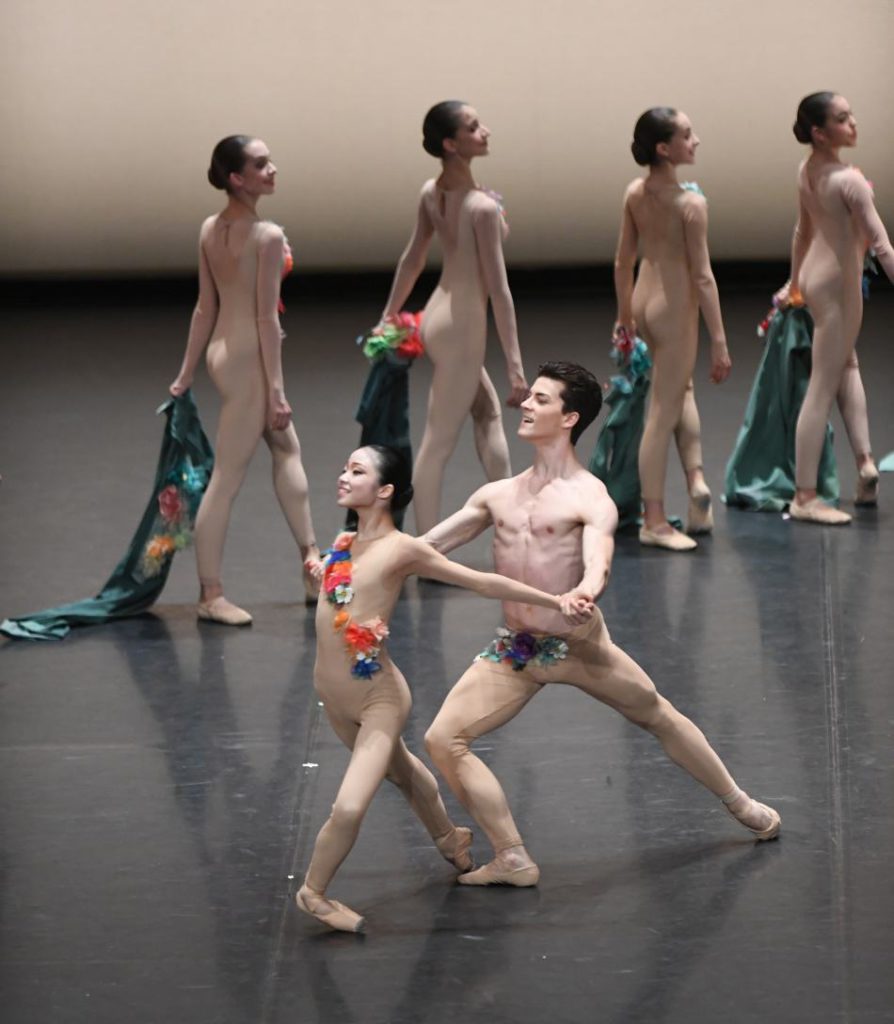 professional degree. Two years later, in 1973, a two-year Academy Class, also called Theater Class, was introduced, which has the status of a vocational school. Nowhere else in West Germany did graduates receive a state diploma as a classical dancer at that time.
professional degree. Two years later, in 1973, a two-year Academy Class, also called Theater Class, was introduced, which has the status of a vocational school. Nowhere else in West Germany did graduates receive a state diploma as a classical dancer at that time.
Anne Woolliams, a close associate of John Cranko, from 1969 on assistant director of the company and also its ballet mistress, was the school’s first headmistress. She was a charismatic, strong leader whom Cranko spoke highly about: “Miss Woolliams’ teaching has been of inestimable value to the Stuttgart Ballet. She is to be felt everywhere, from our prima ballerina to our kindergarten.” Woolliams lived next door to what Cranko called the kindergarten. Her apartment was upstairs in the school building. After Cranko’s untimely death in 1973 Woolliams continued as co-director of Stuttgart Ballet before succeeding Robert Helpmann as artistic director of the Australian Ballet in 1976.
Since 1999 Tadeusz Matacz leads the Cranko School. We sat down in his office on a lovely late summer afternoon to talk about his career and his work at the Cranko School.
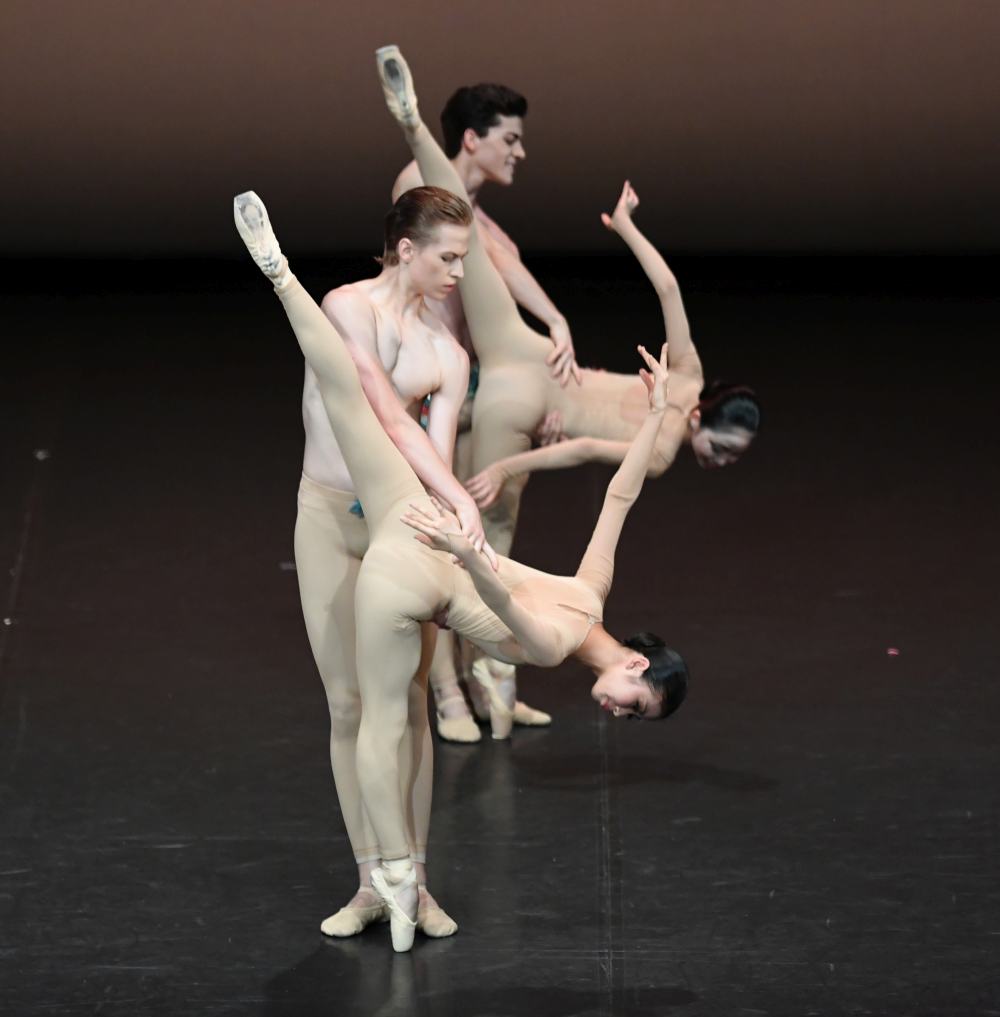 Born in Poland Matacz was trained at Warsaw’s State Ballet Academy. Leonid Zhdanov, a pupil of Nikolai Tarasov, one of the most renowned teachers for classical ballet at the Bolshoi, was his pedagogy teacher. Having been an assistant of Zhdanov for one year, the school asked Matacz to work part-time as a ballet teacher after graduation while at the same time he was already dancing with the company of the Grand Theatre Warsaw. Within only two years he rose to principal rank. “I assume I was a nightmare for my ballet masters and pedagogues. Because I always observed them and compared what they did with how I would have done it. Zhdanov had planted his principles quite firmly in my mind. He was one of the genies in Moscow.”
Born in Poland Matacz was trained at Warsaw’s State Ballet Academy. Leonid Zhdanov, a pupil of Nikolai Tarasov, one of the most renowned teachers for classical ballet at the Bolshoi, was his pedagogy teacher. Having been an assistant of Zhdanov for one year, the school asked Matacz to work part-time as a ballet teacher after graduation while at the same time he was already dancing with the company of the Grand Theatre Warsaw. Within only two years he rose to principal rank. “I assume I was a nightmare for my ballet masters and pedagogues. Because I always observed them and compared what they did with how I would have done it. Zhdanov had planted his principles quite firmly in my mind. He was one of the genies in Moscow.”
In 1984 Matacz moved to Germany and joined the company of the Baden State Ballet Karlsruhe. There he also continued his work as dance pedagogue. When hip problems forced him to quit dancing, he entirely concentrated on teaching, becoming the company’s ballet master and a guest teacher at various companies. Among them was also Stuttgart Ballet. Shortly after Reid Anderson had taken up directorship there, Matacz asked for an interview. “Usually it takes resilience to apply for a job. One writes to numerous directors and in most cases gets a kind letter of refusal. But Reid was straightforward. We talked for ten minutes and the next day I already gave a trial-class. Reid liked it and from then on I commuted every Monday from Karlsruhe to Stuttgart to give class.
Then, around one year later during the last days of the holidays my daughter wanted to have special Adidas shoes, which weren’t for sale in Karlsruhe. So we went to Stuttgart for shopping. I took the opportunity to drop by at Reid’s to talk about 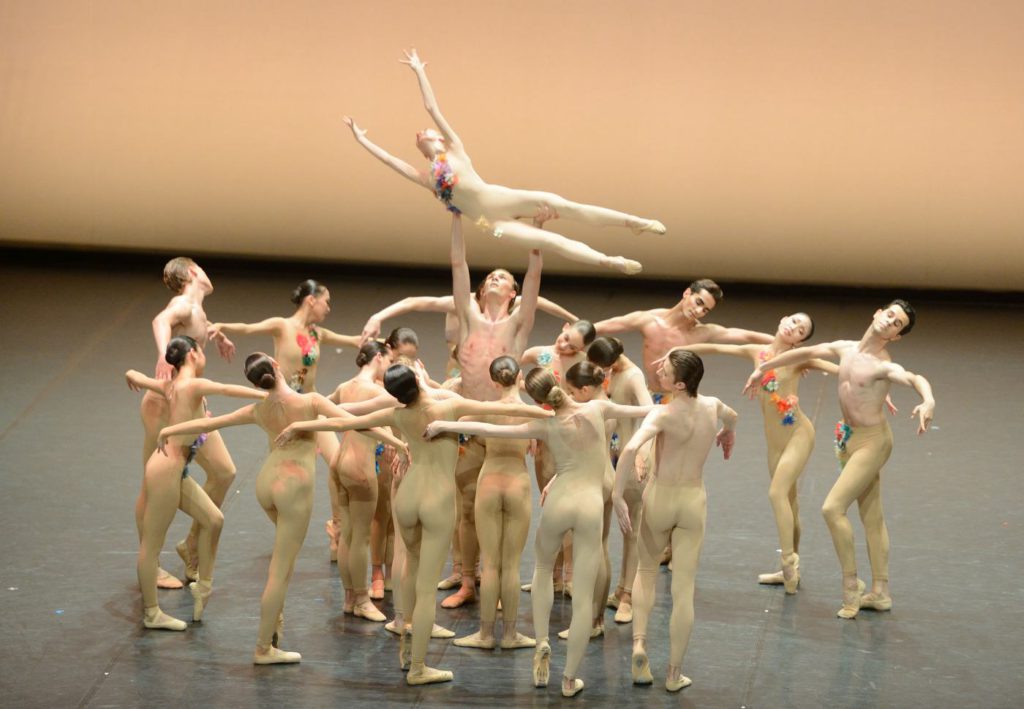 my schedule for the next season. We agreed on a date in October, but soon afterwards he called me to ask whether I could come earlier and teach at the school as well. I agreed and three days after I had started there he offered me the post of the school’s headmaster. I was hesitant at first, countering: But I’m involved with the company!” Matacz laughs. “I already felt away from the school business and attuned to the theater. But Reid said: Just a moment. Go home and talk with your wife about it. I won’t make the same offer a second time.”
my schedule for the next season. We agreed on a date in October, but soon afterwards he called me to ask whether I could come earlier and teach at the school as well. I agreed and three days after I had started there he offered me the post of the school’s headmaster. I was hesitant at first, countering: But I’m involved with the company!” Matacz laughs. “I already felt away from the school business and attuned to the theater. But Reid said: Just a moment. Go home and talk with your wife about it. I won’t make the same offer a second time.”
Fortunately Matacz made the right decision and accepted. His good relationship with the team and, above all, with Anderson, has been a main factor in the school’s success. “One week after taking office I had worked out a strategy, a whole catalog, of how to tackle the business. I read it to Reid, he looked at me and said: Why do you ask? It’s your school. Do what you want! That is how it has stayed during the last nineteen years. Reid gave me carte blanche in every aspect. He supports all of my decisions.”
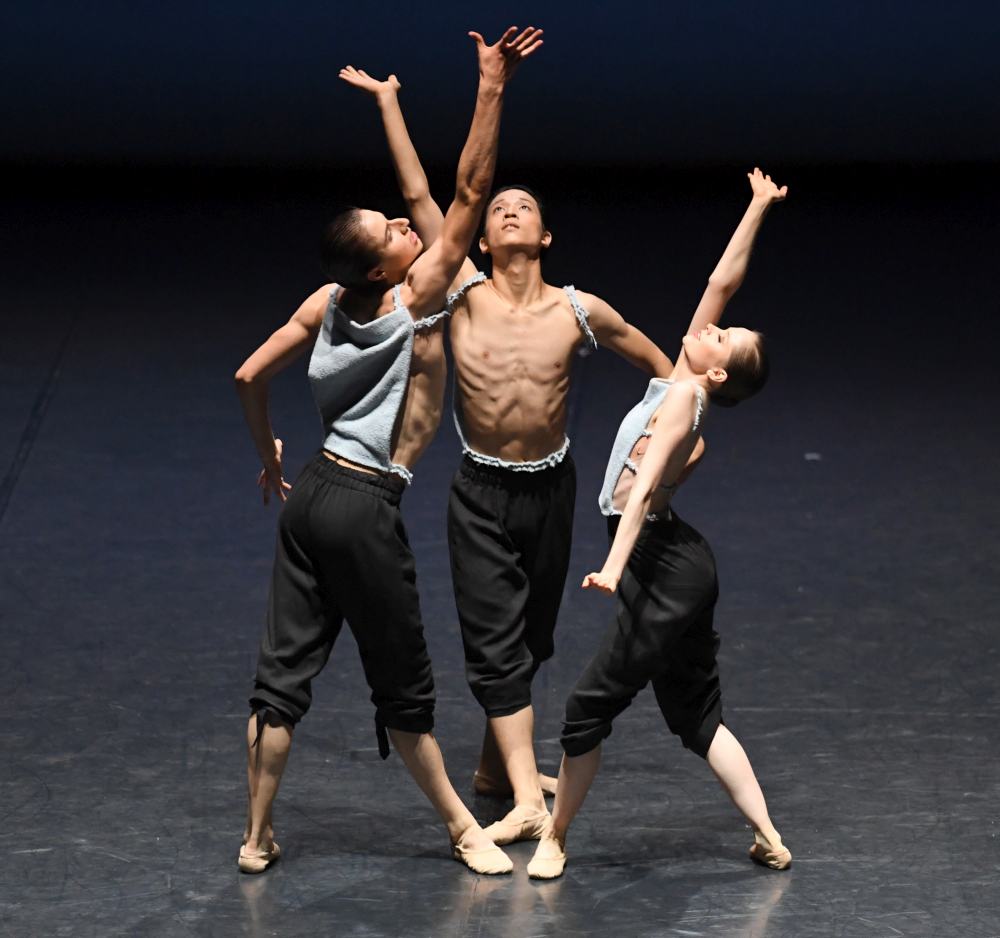 One of those decisions concerns who will be admitted to the school and who will be offered a scholarship. Financial support is granted to talented pupils and to the ones without means. Funds are provided by the State Theater and by private sponsors. “Sometimes one simply has to help a young, promising dancer forward. It happened to me that while I was in South America two people approached me, both visibly poor. They had made the way solely to see me and say Thank you! for having made it possible that their child studied at the Cranko School. I’m touched by this until today.”
One of those decisions concerns who will be admitted to the school and who will be offered a scholarship. Financial support is granted to talented pupils and to the ones without means. Funds are provided by the State Theater and by private sponsors. “Sometimes one simply has to help a young, promising dancer forward. It happened to me that while I was in South America two people approached me, both visibly poor. They had made the way solely to see me and say Thank you! for having made it possible that their child studied at the Cranko School. I’m touched by this until today.”
Matacz is known for having a good eye for spotting talent. “That is something Zhdanov instilled in me. I have an analytical disposition, which helps me. I can project myself into another dancer’s body and my hip problems rather intensified this skill. I cannot do anymore what they do, but I’m with them. Yet after so many years watching dancers I’m maybe simply quicker than some others.”
Brazilian Daniel Camargo is one of Matacz’s discoveries. Camargo completed his education at the Cranko School. “When I saw Daniel for the first time at the YAGP, I noticed immediately how incredibly fleet he is. Like a cat, which, thrown out of the 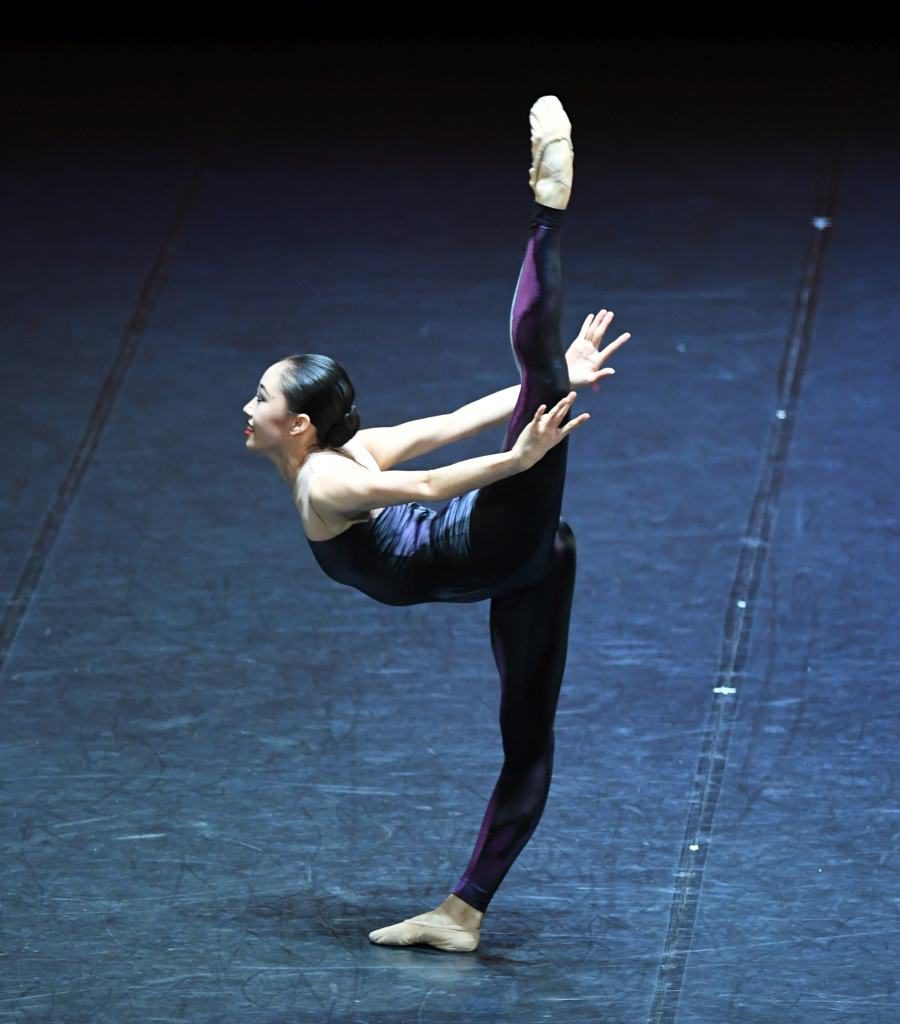
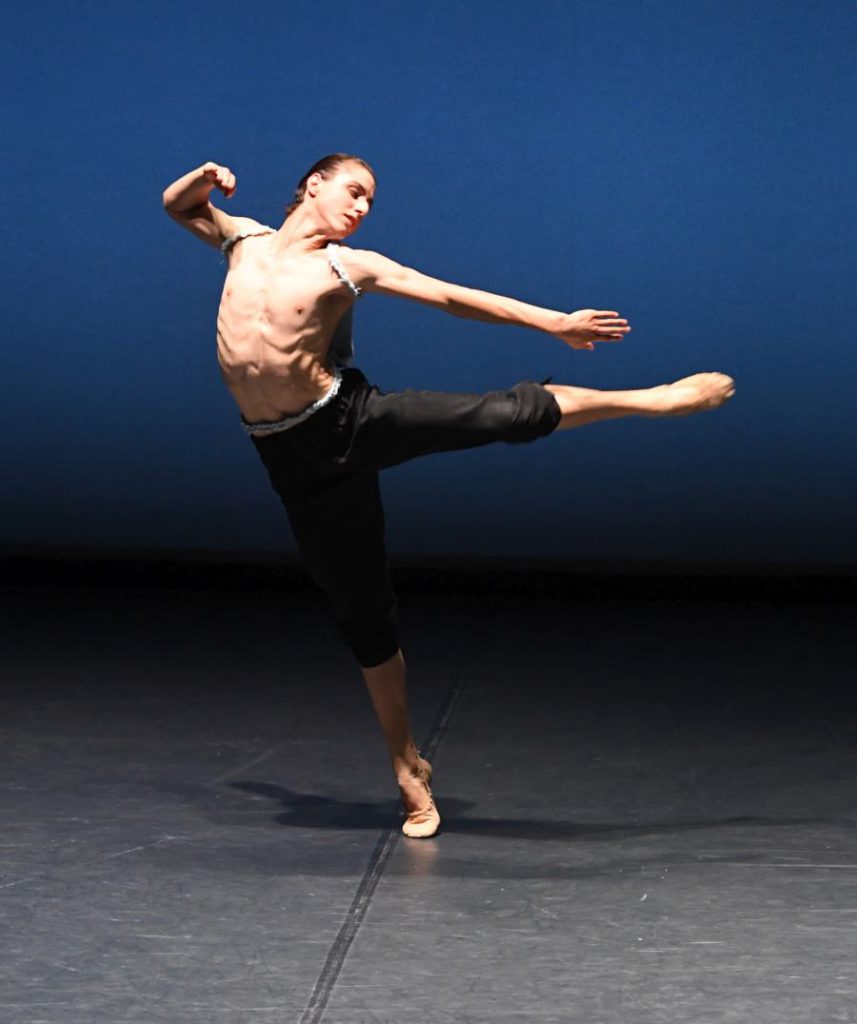 window on the second floor, lands on all four paws. He has a talent for grand jumps like, for example, saut de basque, which is one of the most difficult. He delivered them with such naturalness and ease! Not only I was impressed. But next to me stood soloists from ABT and I remember how amazed they were.” Camargo has a strong stage presence and “we certainly all agree that he looks damned good. I remember a later YAGP, for which our teacher Petr Pestov had assembled a twenty-minute demonstration of his class for five boys. Back then Daniel already danced with the company but on Pestov’s request joined us. He was very humble and integrated himself into the group without any fuss. But at the second day a model scout caught sight of him and tried to wheedle me into Daniel of all things becoming a model. I tried hard to shield Daniel and get him home again.” To Matacz’s regret Camargo left Stuttgart Ballet last season to join Dutch National Ballet. “I hope things will develop positively for him but I worry about him.”
window on the second floor, lands on all four paws. He has a talent for grand jumps like, for example, saut de basque, which is one of the most difficult. He delivered them with such naturalness and ease! Not only I was impressed. But next to me stood soloists from ABT and I remember how amazed they were.” Camargo has a strong stage presence and “we certainly all agree that he looks damned good. I remember a later YAGP, for which our teacher Petr Pestov had assembled a twenty-minute demonstration of his class for five boys. Back then Daniel already danced with the company but on Pestov’s request joined us. He was very humble and integrated himself into the group without any fuss. But at the second day a model scout caught sight of him and tried to wheedle me into Daniel of all things becoming a model. I tried hard to shield Daniel and get him home again.” To Matacz’s regret Camargo left Stuttgart Ballet last season to join Dutch National Ballet. “I hope things will develop positively for him but I worry about him.”
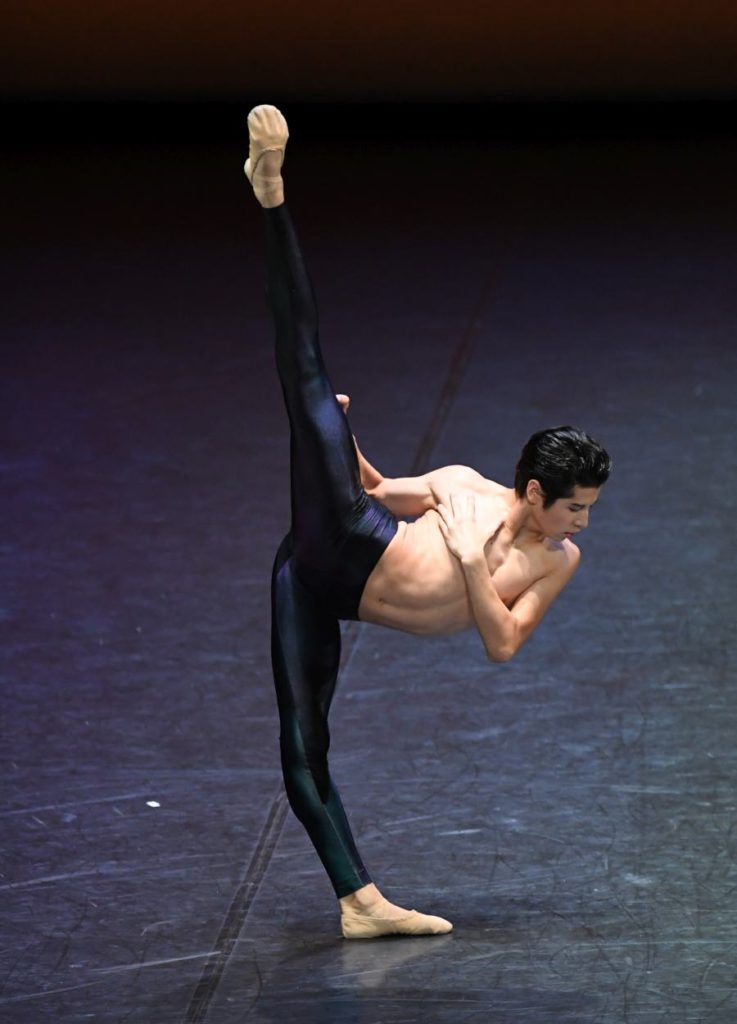
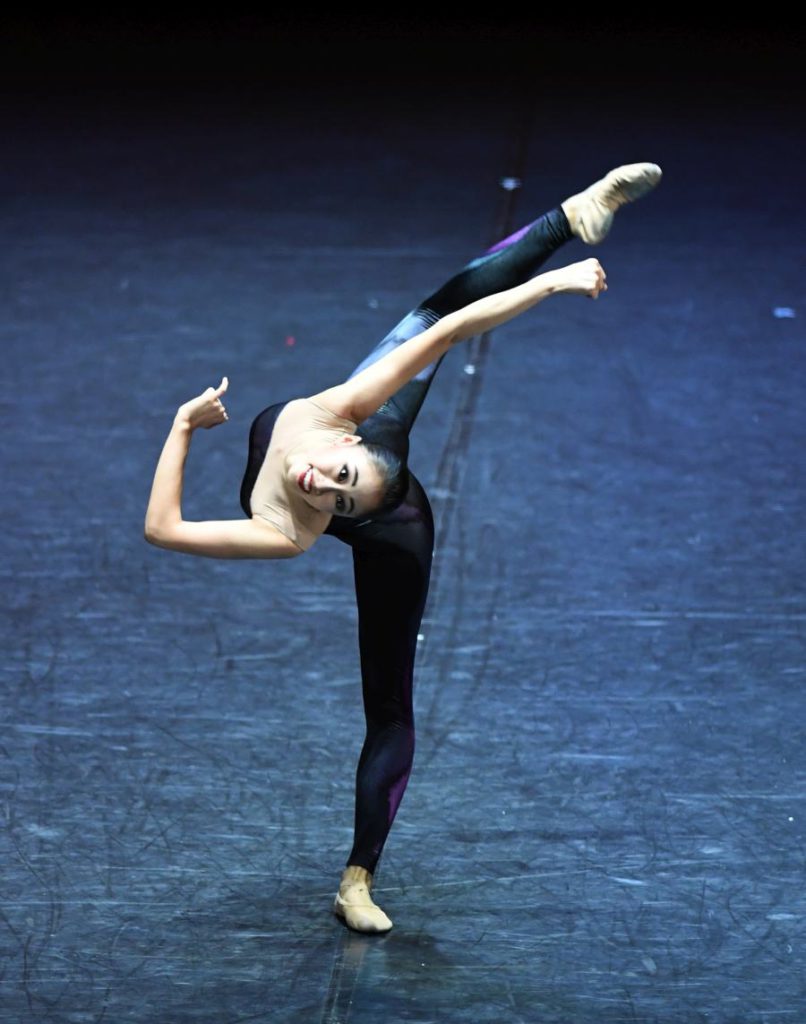 All of the Cranko School’s ballet teachers come from Russia or studied there. Teaching is based on the Vaganova system and, what Matacz considers very important “we teachers agree upon the basic vocabulary. It is not that one teaches cou-de-pied here and the other one there. During my student time in Warsaw we had Russian teachers from Moscow and from St. Petersburg; Polish teachers who had studied either in Moscow, St. Petersburg or Poland. Five groups – five different opinions. When entering another teacher’s class in the next school year one easily faced outcries: For heaven’s sake, who taught you this?! So even the Vaganova system seems to allow different interpretation. But if the teachers are disunited over the technique the students suffer the consequences. I found that terrible and we avoid that here.”
All of the Cranko School’s ballet teachers come from Russia or studied there. Teaching is based on the Vaganova system and, what Matacz considers very important “we teachers agree upon the basic vocabulary. It is not that one teaches cou-de-pied here and the other one there. During my student time in Warsaw we had Russian teachers from Moscow and from St. Petersburg; Polish teachers who had studied either in Moscow, St. Petersburg or Poland. Five groups – five different opinions. When entering another teacher’s class in the next school year one easily faced outcries: For heaven’s sake, who taught you this?! So even the Vaganova system seems to allow different interpretation. But if the teachers are disunited over the technique the students suffer the consequences. I found that terrible and we avoid that here.”
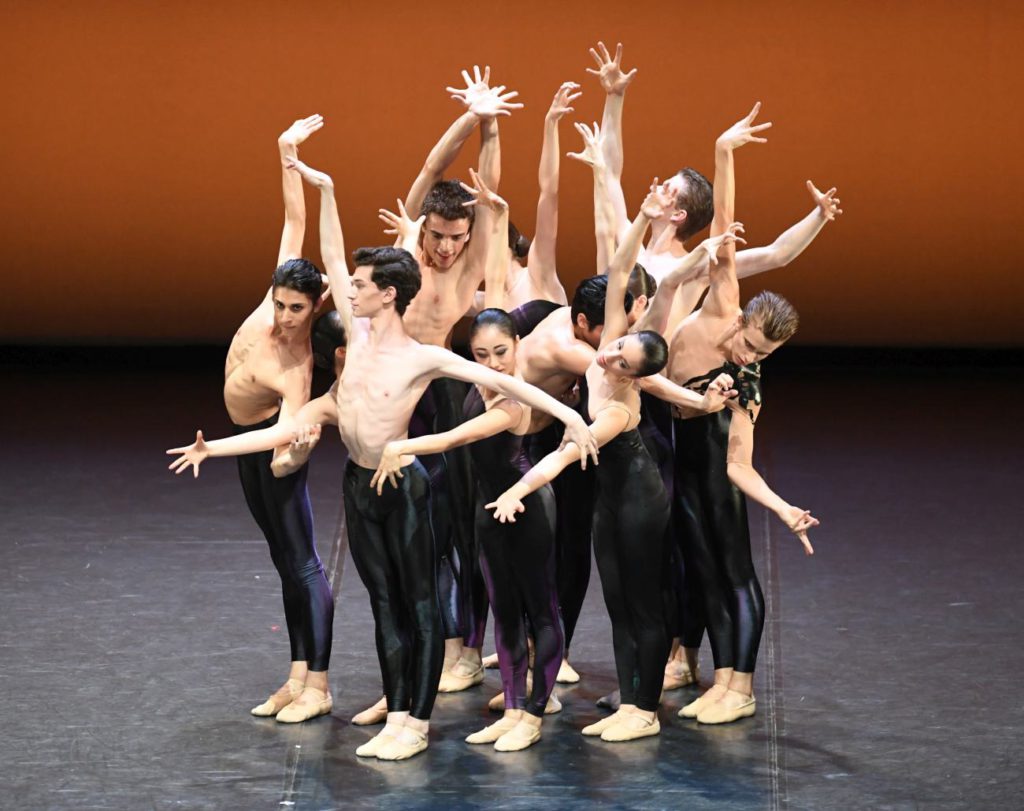 Classical dance is at the core of the Cranko School’s curriculum. When it comes to character dance, Matacz goes into detail: “What is commonly understood as character dance is found in the third-act divertissements in Petipa’s works: Spanish, Italian, Hungarian, Polish and Russian dances. But they aren’t served true to the original dances, which, for example in terms of Polish dance, has very complicated steps.” What leads Matacz to sweep up from his chair to demonstrate some samples. “I once tried to install lessons for Polish dance… In any case today’s character dance has degenerated into ballet steps and chichi, then a sudden tour en l’air and that’s called the character dance. When I as a Pole watch Russians dance a mazurka or a polonaise, you can imagine I’m not exactly happy with it. Under Petipa, the Polish dances were performed by Poles, by the father of Nijinsky. Not by Russians!”
Classical dance is at the core of the Cranko School’s curriculum. When it comes to character dance, Matacz goes into detail: “What is commonly understood as character dance is found in the third-act divertissements in Petipa’s works: Spanish, Italian, Hungarian, Polish and Russian dances. But they aren’t served true to the original dances, which, for example in terms of Polish dance, has very complicated steps.” What leads Matacz to sweep up from his chair to demonstrate some samples. “I once tried to install lessons for Polish dance… In any case today’s character dance has degenerated into ballet steps and chichi, then a sudden tour en l’air and that’s called the character dance. When I as a Pole watch Russians dance a mazurka or a polonaise, you can imagine I’m not exactly happy with it. Under Petipa, the Polish dances were performed by Poles, by the father of Nijinsky. Not by Russians!”
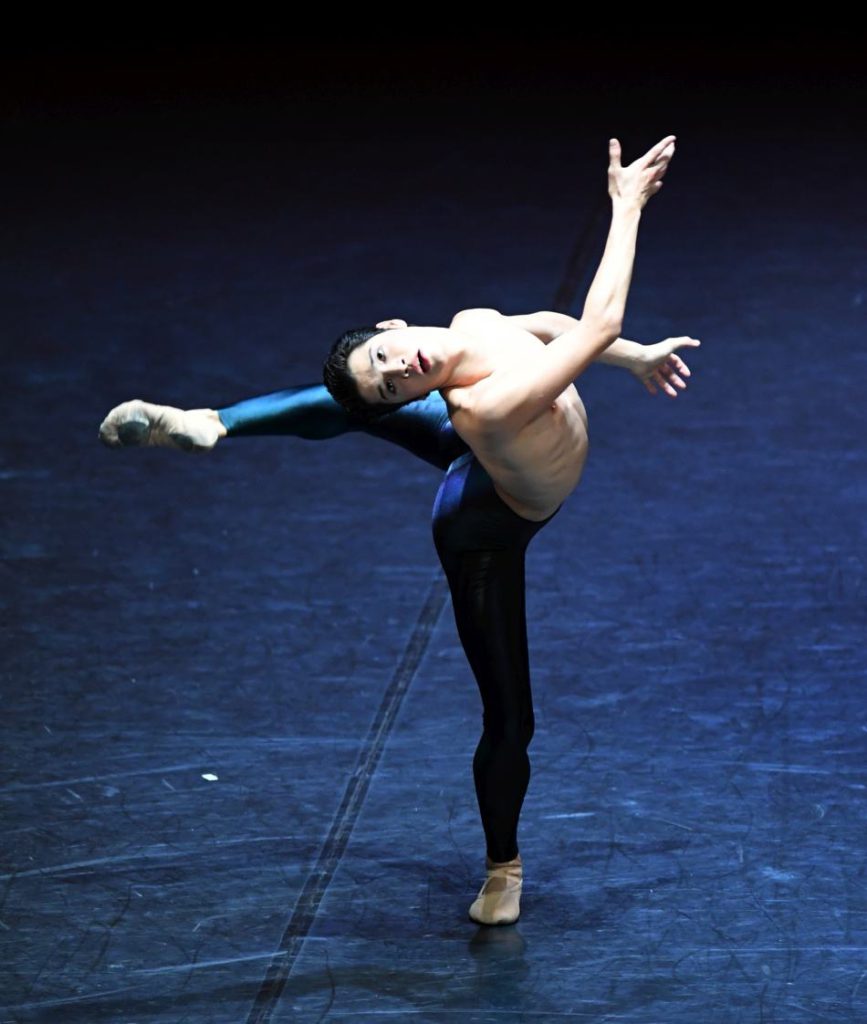
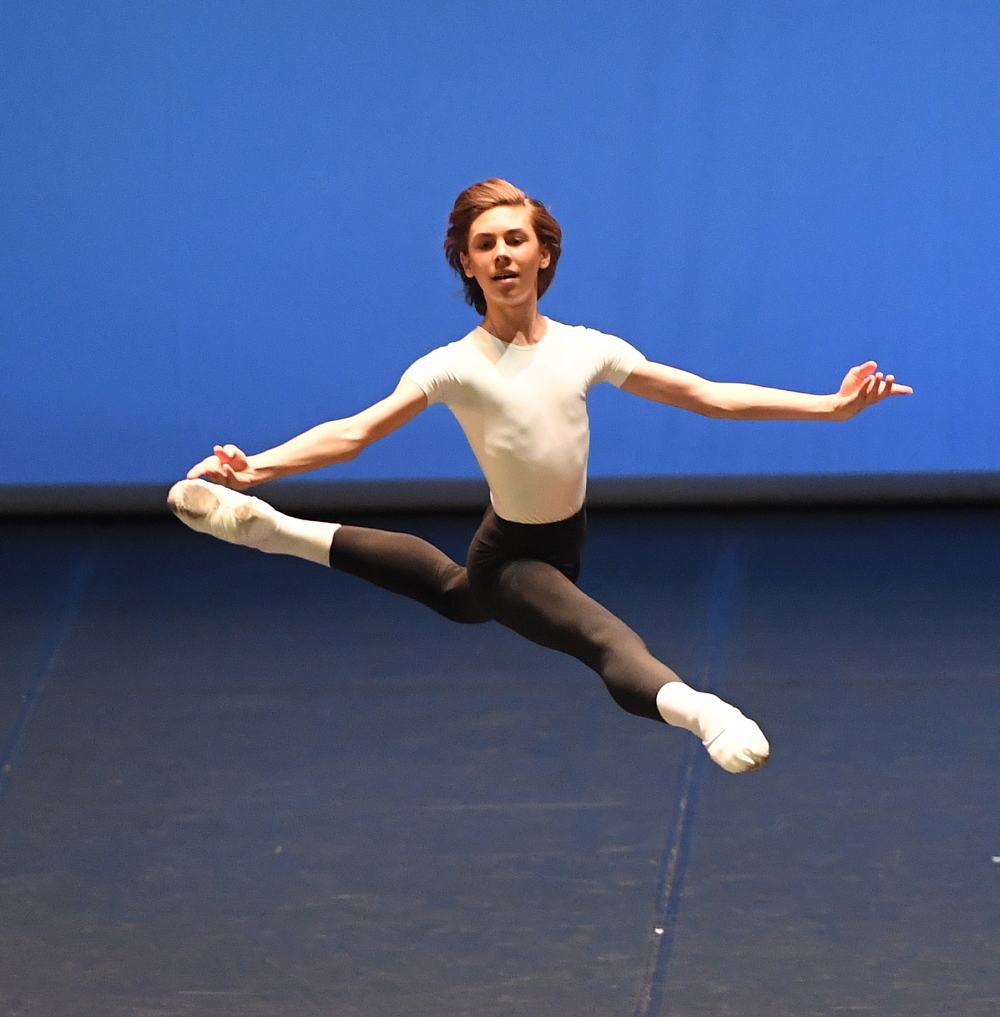 “When I was a student in Warsaw we had a wonderful teacher who traced the origins, the essences, of the character dances. They are enormously varied! We started with five years Polish dance, and its scope is broad enough to spend so much time on it. From the fifth year on we had Spanish, Hungarian, Russian and, again, Polish dance, each style for a six months period. Later, as a ballet master in Karlsruhe, that helped me much. When we mounted the musical “La Cage aux Folles” we had thirty drag queens on high heels included. Someone from Berlin rehearsed the dance sequence with them. It was at the end of the season and the next season opened with the same piece, but half of the thirty dancers were new. And I had to teach them alone. But I made it because I still remembered the steps I had learned at school.”
“When I was a student in Warsaw we had a wonderful teacher who traced the origins, the essences, of the character dances. They are enormously varied! We started with five years Polish dance, and its scope is broad enough to spend so much time on it. From the fifth year on we had Spanish, Hungarian, Russian and, again, Polish dance, each style for a six months period. Later, as a ballet master in Karlsruhe, that helped me much. When we mounted the musical “La Cage aux Folles” we had thirty drag queens on high heels included. Someone from Berlin rehearsed the dance sequence with them. It was at the end of the season and the next season opened with the same piece, but half of the thirty dancers were new. And I had to teach them alone. But I made it because I still remembered the steps I had learned at school.”
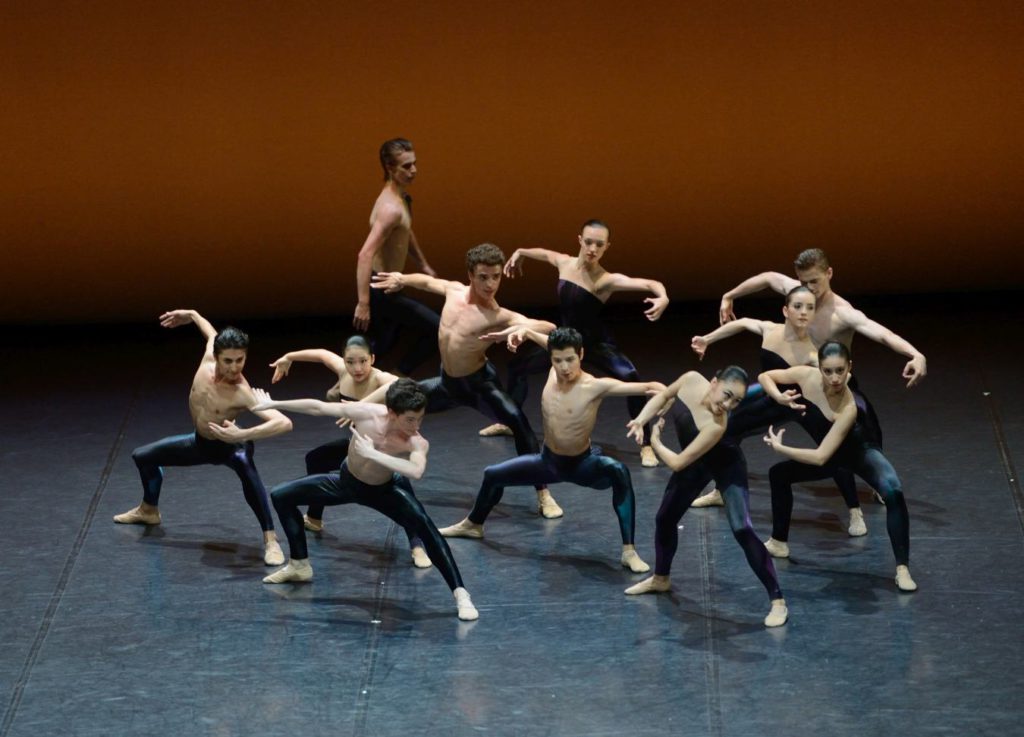 “But to come back to character dance as a school subject, we include only Spanish dance, for which we have an exceptionally good teacher. And I added teaching castanets. Each student has to play separately. Later, when one of the girls is cast in “Don Quixote”, she’ll know how to play. There would be other marvelous things to teach as well, but, alas, I neither have the right teachers – and the essential thing are blessed teachers – nor a free position or even a time slot in the schedule. Unlike the Palucca School we don’t teach choreography either. Instead we approach students with an inclination for choreography individually and encourage them to give it a try. That turns out to be quite efficient. “The Four Seasons”, shown at our last gala, were collaboratively choreographed by four of our former students.”
“But to come back to character dance as a school subject, we include only Spanish dance, for which we have an exceptionally good teacher. And I added teaching castanets. Each student has to play separately. Later, when one of the girls is cast in “Don Quixote”, she’ll know how to play. There would be other marvelous things to teach as well, but, alas, I neither have the right teachers – and the essential thing are blessed teachers – nor a free position or even a time slot in the schedule. Unlike the Palucca School we don’t teach choreography either. Instead we approach students with an inclination for choreography individually and encourage them to give it a try. That turns out to be quite efficient. “The Four Seasons”, shown at our last gala, were collaboratively choreographed by four of our former students.”
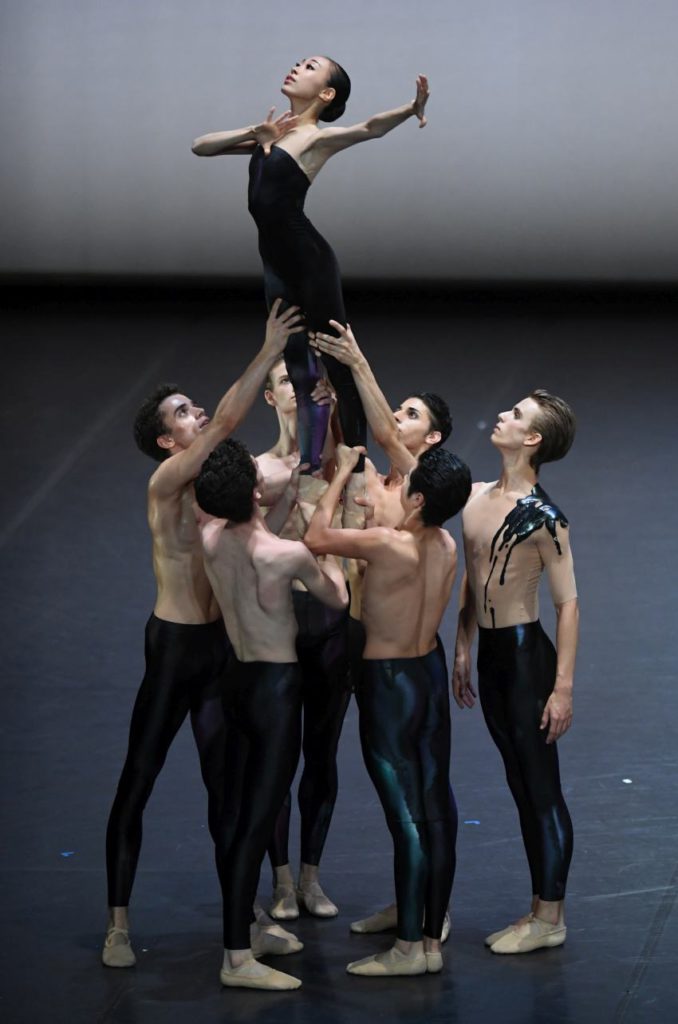 Are there further assets adding to the schools reputation? “We maintain a rigor, which might seem old-fashioned for today’s generations. We don’t pretend that things are easy or that it’s about having fun. No, there are certain rules: we go on stage and we have to give our best there. I stick to the Buddhist saying When at a crossroads choose the stonier path. That is the only way to proceed. But many out there promote an easier approach, advocating, for example, that everyone has to find his own way of expression and get it across believably. Wonderful! But that has nothing to do with classical dance. Classical dance is like music, one has to strike the right chords. It is not about playing off-key notes but with self-confidence. Everyday class is crucial. The spectrum of styles required by today’s choreographers is so broad that in case one lacks a crystal-clear body control, the body easily gets confused by serving different movement patterns. And that control isn’t gained through physiotherapy, Gyrotonic or Pilates, but every day in class.”
Are there further assets adding to the schools reputation? “We maintain a rigor, which might seem old-fashioned for today’s generations. We don’t pretend that things are easy or that it’s about having fun. No, there are certain rules: we go on stage and we have to give our best there. I stick to the Buddhist saying When at a crossroads choose the stonier path. That is the only way to proceed. But many out there promote an easier approach, advocating, for example, that everyone has to find his own way of expression and get it across believably. Wonderful! But that has nothing to do with classical dance. Classical dance is like music, one has to strike the right chords. It is not about playing off-key notes but with self-confidence. Everyday class is crucial. The spectrum of styles required by today’s choreographers is so broad that in case one lacks a crystal-clear body control, the body easily gets confused by serving different movement patterns. And that control isn’t gained through physiotherapy, Gyrotonic or Pilates, but every day in class.”
I watched one of these classes, an extra-class in the early afternoon for the newly accepted students aimed to help them adapt to the school’s teaching. Nicola Biasutti worked with the mixed group, which was larger than usual, almost twenty students aged 14-16 from all over the world, among them two boys. Biasutti switched between languages to explain and give corrections. Though the school 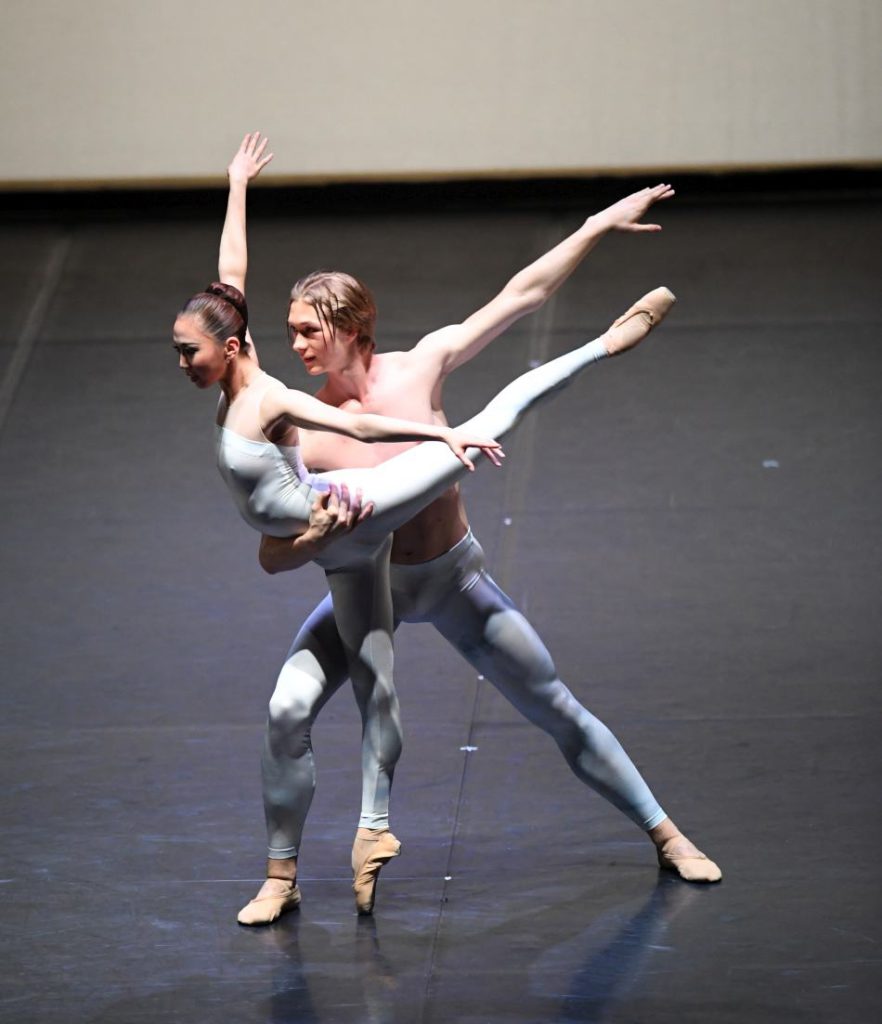
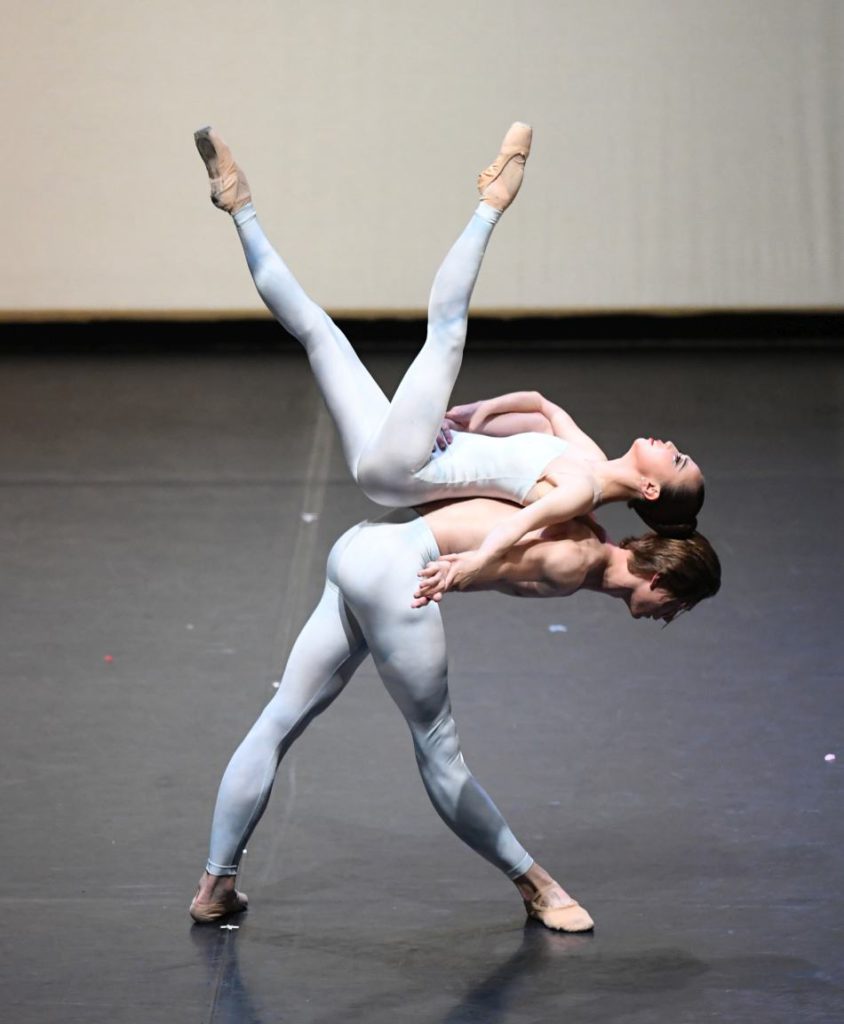 year had just begun he seemed to already know each one. Regardless of the summer heat, the class worked dedicatedly.
year had just begun he seemed to already know each one. Regardless of the summer heat, the class worked dedicatedly.
Becoming a dancer is no cakewalk. For some the body sets limits at one point. Also here Matacz has a clear opinion: “Some colleagues, mainly Russian ones, tend to let weaker students pass to the next level counting on the fact that they will have time to develop later when in the corps de ballet. They still have the huge companies in mind, 150-200 dancers strong, where one can settle as a spear bearer in the back row. But companies of such size get rarer and rarer. Today, most new dancers get a contract for the group plus solo. Hardly anywhere is one given time to grow slowly. From day one young dancers have to stand their ground on stage.”
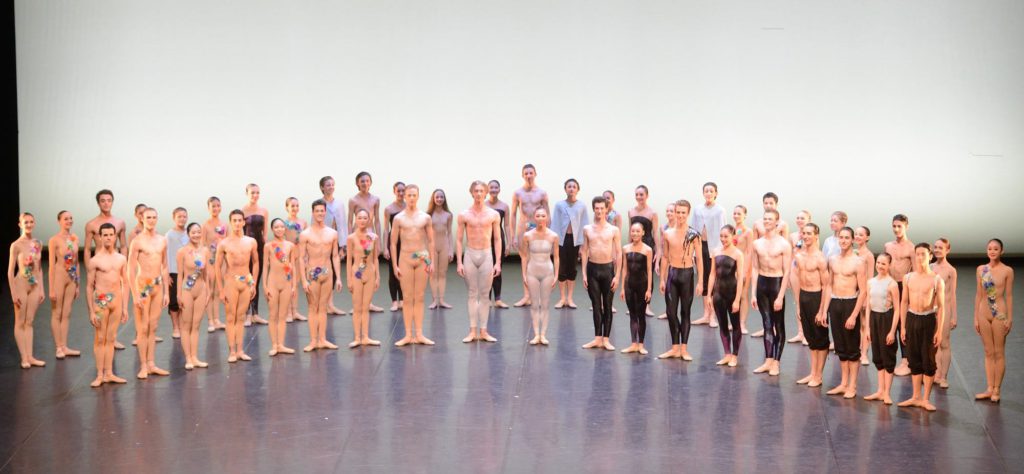 There is also the fact that the competition for contracts is fierce. “Shortly after reunification we had 3600 jobs for dancers at 52 State Theaters, but, due to downsizing and the consolidation of companies like in Berlin, the number dropped to 1200 jobs four or five years ago. That’s a reduction of 66%! Nonetheless, till recently each Cranko School graduate always got a contract. But the inflow of dancers from abroad makes the situation more difficult. One could wonder whether eleven ballet schools for professional training are really necessary in Germany if dancing were not so rewarding for one’s personal development.”
There is also the fact that the competition for contracts is fierce. “Shortly after reunification we had 3600 jobs for dancers at 52 State Theaters, but, due to downsizing and the consolidation of companies like in Berlin, the number dropped to 1200 jobs four or five years ago. That’s a reduction of 66%! Nonetheless, till recently each Cranko School graduate always got a contract. But the inflow of dancers from abroad makes the situation more difficult. One could wonder whether eleven ballet schools for professional training are really necessary in Germany if dancing were not so rewarding for one’s personal development.”
Ballet training teaches discipline, to progress one has to be ready to work hard. That requires passion. Beauty and perfection won’t fall into one’s lap. Challenges, which are less popular among today’s youth than in earlier times. Fewer children want to 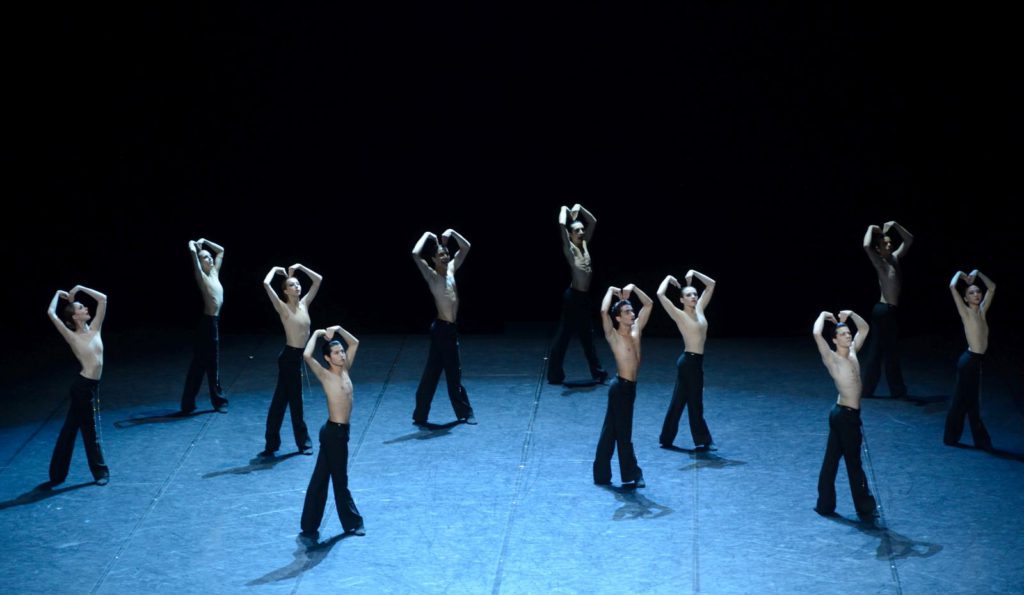 work seriously for ballet. Given the financial perspectives, the hard competition and a career limited in time, parents are also hesitant to back their children’s dancing ambitions. Timetables of regular schools, where afternoon lessons are more and more frequent, interfere with the dance lessons too. Matacz notices this trend but doesn’t have to worry about enrollment numbers. Currently the school has almost 130 students. Pre-school starts at age seven and, after four years, is followed by a six-year basic education. A two-year academy program complements the professional training. Each class has between 6 and 10 students. While during the pre-school years girls dominate, the gender relation is balanced in the Academy Classes.
work seriously for ballet. Given the financial perspectives, the hard competition and a career limited in time, parents are also hesitant to back their children’s dancing ambitions. Timetables of regular schools, where afternoon lessons are more and more frequent, interfere with the dance lessons too. Matacz notices this trend but doesn’t have to worry about enrollment numbers. Currently the school has almost 130 students. Pre-school starts at age seven and, after four years, is followed by a six-year basic education. A two-year academy program complements the professional training. Each class has between 6 and 10 students. While during the pre-school years girls dominate, the gender relation is balanced in the Academy Classes.
“We have a fabulous cooperation with the regular schools in Stuttgart. They know about the Cranko School and are very accommodating. Our pupils are the best in their classes anyway. At the moment I have to persuade some school directors in the surrounding regions, in Tübingen and Reutlingen, where some of our younger students commute from. But things will  become much easier, when our new school building is ready to move into.” He smiles. It took years of tough negotiations until the policy-makers of Baden-Wuerttemberg and the city government gave the green light for the new construction of the Cranko School. The new premises will be only within a stone’s throw distance from the current address. Their completion is scheduled for autumn 2018. Then, Matacz will have eight studios, a rehearsal stage, a health center and a dormitory with around 70 places at his disposal. “That will give us much more flexibility in when to schedule classes.”
become much easier, when our new school building is ready to move into.” He smiles. It took years of tough negotiations until the policy-makers of Baden-Wuerttemberg and the city government gave the green light for the new construction of the Cranko School. The new premises will be only within a stone’s throw distance from the current address. Their completion is scheduled for autumn 2018. Then, Matacz will have eight studios, a rehearsal stage, a health center and a dormitory with around 70 places at his disposal. “That will give us much more flexibility in when to schedule classes.”
I am wondering where the Cranko School will land in surveys when also boasting brand new facilities. London- be careful!
(The interview has been edited for clarity.)
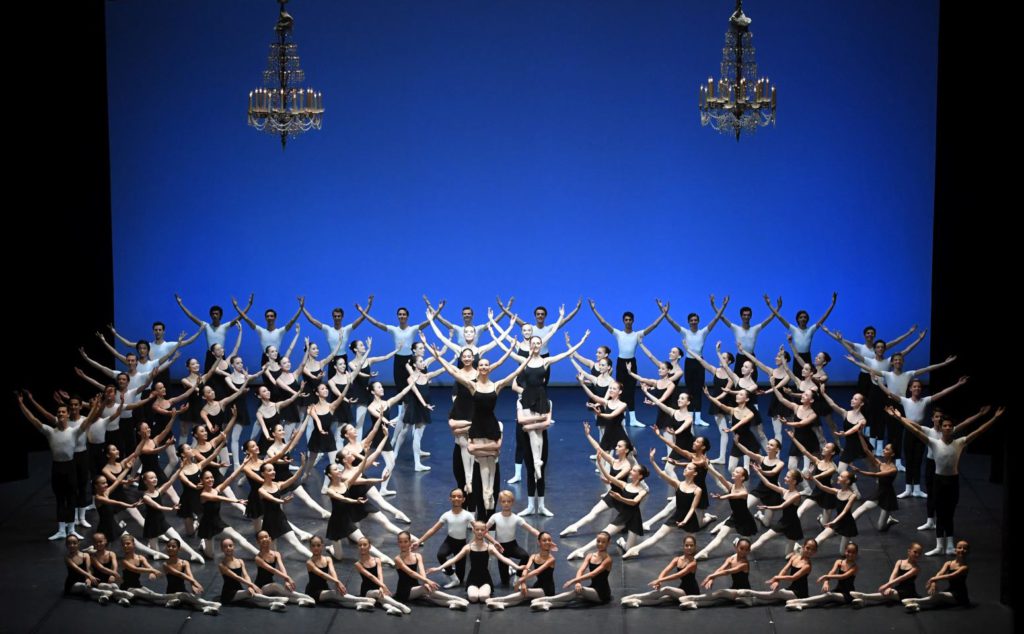
| Link: | Homepage of the John Cranko School | |
| Photos: | 1. | Tadeusz Matacz © Tadeusz Matacz |
| 2. | Students of the John Cranko School, “Etudes” by Tadeusz and Barbara Matacz © Stuttgart Ballet 2016 |
|
| 3. | Students of the John Cranko School, “The Four Seasons”: “Spring” by Katarzyna Kozielska © Stuttgart Ballet 2016 |
|
| 4. | Students of the John Cranko School, “The Four Seasons”: “Spring” by Katarzyna Kozielska © Stuttgart Ballet 2016 |
|
| 5. | Students of the John Cranko School, “The Four Seasons”: “Spring” by Katarzyna Kozielska © Stuttgart Ballet 2016 | |
| 6. | Alexandra McMaster, Timoor Afshar and Riku Ota, “The Four Seasons”: “Summer” by Louis Stiens © Stuttgart Ballet 2016 |
|
| 7. | Timoor Afshar, “The Four Seasons”: “Summer” by Louis Stiens © Stuttgart Ballet 2016 |
|
| 8. | Madeline Woo, “The Four Seasons”: “Autumn” by Fabio Adorisio © Stuttgart Ballet 2016 |
|
| 9. | Riccardo Ferlito, “The Four Seasons”: “Autumn” by Fabio Adorisio © Stuttgart Ballet 2016 |
|
| 10. | Madeline Woo, “The Four Seasons”: “Autumn” by Fabio Adorisio © Stuttgart Ballet 2016 |
|
| 11. | Students of the John Cranko School, “The Four Seasons”: “Autumn” by Fabio Adorisio © Stuttgart Ballet 2016 |
|
| 12. | Riccardo Ferlito, “The Four Seasons”: “Autumn” by Fabio Adorisio © Stuttgart Ballet 2016 |
|
| 13. | Gabriel Figueredo, “Etudes” by Tadeusz and Barbara Matacz © Stuttgart Ballet 2016 |
|
| 14. | Students of the John Cranko School, “The Four Seasons”: “Autumn” by Fabio Adorisio © Stuttgart Ballet 2016 |
|
| 15. | Students of the John Cranko School, “The Four Seasons”: “Autumn” by Fabio Adorisio © Stuttgart Ballet 2016 |
|
| 16. | Eun Sil Kim and Nikita Korneev, “The Four Seasons”: “Winter” by Demis Volpi © Stuttgart Ballet 2016 |
|
| 17. | Eun Sil Kim and Nikita Korneev, “The Four Seasons”: “Winter” by Demis Volpi © Stuttgart Ballet 2016 |
|
| 18. | Students of the John Cranko School, “The Four Seasons” by Katarzyna Kozielska, Louis Stiens, Fabio Adorisio and Demis Volpi © Stuttgart Ballet 2016 |
|
| 19. | Students of the John Cranko School, “A Spell on You” by Marco Goecke © Stuttgart Ballet 2016 |
|
| 20. | Model of the new building of the John Cranko School © Ralf Grolms 2016 | |
| 21. | Students of the John Cranko School, “Etudes” by Tadeusz and Barbara Matacz © Stuttgart Ballet 2016 | |
| Editing: | Agnes Farkas |
